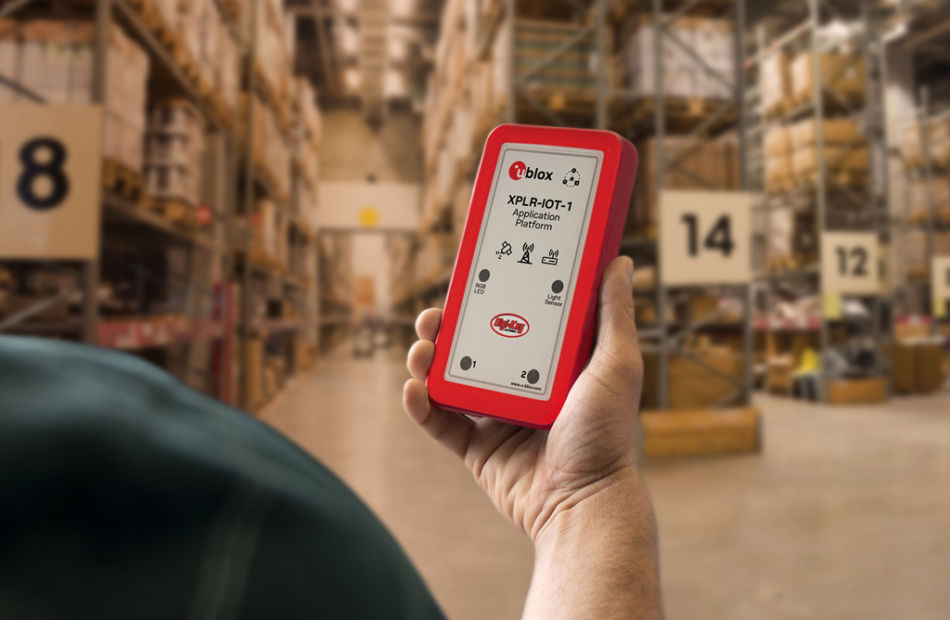U-Blox kit tests and validates IoT projects
- June 8, 2022
- Steve Rogerson

Swiss firm U-Blox has released an all-in-one package to test, evaluate and validate IoT applications.
The XPLR-IoT-1 IoT explorer kit integrates relevant U-Blox technologies and services into a prototyping platform with sensors and interfaces as well as cloud connectivity. It is said to make it easier to explore the potential of IoT applications.
The increasing complexity of IoT devices, which often require satellite-based positioning, Bluetooth Low Energy, wifi and cellular connectivity via, for example, LTE-M is raising the importance of prototyping and validating ideas before bringing them to production. This trend is driving demand for multifunctional application boards such as this evaluation kit, intended to test a product’s entire feature set.
The kit gives users everything they need to prototype low-power IoT use cases such as logistics container trackers, industrial automation, sensor-to-cloud applications and fleet management technology. The board’s Nora-B106 Bluetooth LE 5.2 radio module doubles as its main MCU, hosting the application software and controlling the other modules. These include a Sara-R510S for LTE-M and NB-IoT cellular connectivity with built in cloud security, as well as a Nina-W156 for 2.4GHz wifi.
The board also hosts a low-power Max-M10S positioning module capable of concurrently tracking four GNSS constellations, delivering reliable location data wherever GNSS coverage is available.
The hardware is complemented by a selection of sensors commonly used in IoT applications, including accelerometers and gyroscopes, a magnetometer, and temperature, humidity, pressure and ambient light sensors. A power-on switch, LEDs and user buttons make it easier for users to interact with the device.
The Nora-B106’s Arm Cortex M33 MCU is solely dedicated to running the application software. Clocked at 128MHz, with 1Mbyte of embedded flash and 512kbyte of RAM and 8Mbyte of external flash memory, it offers a foundation for development. Integrated antennas for all featured technologies, a USB interface and USB charging, Sparkfun Qwiic I2C connector, and a debug interface contribute to a smooth product development experience.
The kit provides engineers with an easier way to start working with U-Blox’s services. Included with the kit is a trial of MQTT Anywhere, which delivers low power by communicating data between the device and the enterprise using the MQTT-SN (MQTT for sensor networks) protocol.
Tracking applications with stringent power requirements such as freight container trackers can realise four times longer battery life with U-Blox’s CloudLocate positioning in cloud service, while the CellLocate mobile-network-based location service extends tracking beyond the reach of GNSS signals.
Developers working with the kit can use code from the Ubxlib GitHub repository, a library of software examples for key use cases, to speed up prototyping, ranging from wireless sensor networks to indoor and outdoor tracking to industrial or smart building gateways. Because all hardware design files, software, smartphone app and online dashboard source code are shared, the kit can also serve as a starting point for commercial end-product design.
“The XPLR-IOT-1 is fully geared towards rapid development, testing and validation of IoT solutions,” said Pelle Svensson, senior principal at U-Blox. “Offering a single platform to develop a variety of IoT use cases, the versatile explorer kit reduces the expertise required for hardware, software and service integration and code development.
Once launched this month, the kit will initially be sold via Digi-Key.
With headquarters in Thalwil, Switzerland, U-Blox has offices in Europe, Asia and the USA.





